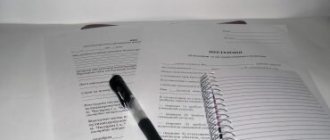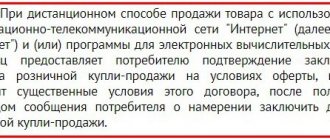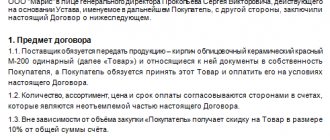Source: RosKvartal® - Internet service No. 1 for management organizations
The final decision of the general meeting must be formalized in the form of minutes of the general meeting with all voting ballots attached to it. The minutes must be drawn up in writing no later than 10 days from the date of the meeting, since no later than this period the results of the meeting must be brought to the attention of the owners of the premises in the house (Part 3 of Article 46 of the Housing Code of the Russian Federation).
In the case of an absentee meeting or an absentee part of an in-person meeting, this period is fixed from the end of the reception of written decisions of the owners, established in the notice of the general meeting. All data must correspond to those specified in the notification of the OSS.
The requirements for the preparation of the protocol are established by order of the Ministry of Construction of the Russian Federation dated January 28, 2019 No. 44/pr. The secretary of the general meeting, whose candidacy was selected at the OSS, conducts and draws up the minutes.
Protocol header
- title of the document “Minutes of the general meeting of owners of premises in an apartment building”;
- date (the date of the minutes is the date of summing up the results of the general meeting: the end of the counting of votes) and the registration number of the minutes (serial number from the beginning of the calendar year);
- date of the meeting (if the meeting lasted several days, then the start date and end date of the meeting are indicated);
- place of the meeting (indicate the address at which the meeting was held in person, or the address at which decisions were collected if the meeting was held in absentia);
- title to the content part (must contain information about the address of the MKD, the type of general meeting and the form of its holding).
Procedure for re-electing the chairman
The chairman of the HOA is elected by the board meeting, choosing him from among its members. That is, only a member of the HOA board can become the chairman.
However, sometimes it becomes necessary to remove the head of the partnership. Unsatisfactory performance of one's duties, theft, voluntary desire to leave for some personal reasons - there can be many reasons. What to do in such cases?
The algorithm is simple! It will be necessary to call a special meeting, observing all the above conditions (10 days notice, agenda, etc.). At the meeting, candidates for this “supreme” position must be presented to the participants, after which the start of voting is announced.
Participants fill out ballots, and a commission counts the votes. It is immediately announced who is the winner and will now replace his predecessor. The decision is formalized as part of the minutes of the general meeting.
Over the next few days, be sure to let the tax authority and the housing inspection know about the change of board.
There is another way to re-elect the chairman. Meeting participants can choose not the chairman himself, but new members of the board . The latter, according to the traditional scheme, will choose a chairman from their circle.
Finally, you can not gather and vote at all, but leave the matter of re-election to the board (if the composition of this body does not need to be changed).
Contents of the protocol
- Information about the initiator of the OSS: for legal entities, full name, OGRN, record number of the state registration of the legal entity, TIN; for individuals - full name in accordance with the identification document, room number and details of the document confirming ownership of such premises;
- Information about the chairman, secretary and members of the counting commission: full name, room numbers and details of documents confirming ownership of the specified premises (if the issue of choosing these persons is not included in the agenda of the meeting);
- Information about those present and invited;
Those present are those owners who attended the meeting in person. The invitees can be different people, for example, a lawyer who can explain some legal issues to the owners.
For invited persons, the protocol indicates the full name, passport details and purpose of participation - for individuals; OGRN, name of the legal entity, if necessary - power of attorney (for legal entities).
- Quorum information;
You need to indicate the total number of votes (separately for residential and non-residential premises), the next line is the presence of a quorum. The number of votes of owners present at the meeting, expressed as a percentage of the total number of votes, is the quorum.
- Information on the total area of residential and non-residential premises in the apartment building;
- Agenda;
All items on the agenda must be numbered. For each question, the wording of the question is written, who voted how, who did not take part in the vote, and what decision was made. All wording must be in the third person plural - “adopted”, “decided”, “decided”.
- The place where the OSS documents (copies) will be stored;
- Signatures.
The protocol must be signed by at least three persons: surnames, initials and signatures of the chairman, secretary, and counting commission. There may be one person on the counting commission, but if there are more, then everyone signs. Next to the signature there should be the date when the document was signed (clause 4 of the order of the Ministry of Construction of the Russian Federation dated January 28, 2019 No. 44/pr).
If the candidates for chairman, secretary and counting commission were rejected at the meeting, the minutes are signed by the initiator of the meeting.
Minutes of the general meeting of owners: how to draw up according to the new requirements
Minutes are drawn up at each general meeting of owners so that decisions made by voting by homeowners enter into legal force. The correct minutes of the general meeting of owners, competent completion of the items in accordance with the Order, are of great importance, because any, at first glance, insignificant error can become the reason for a lawsuit brought by residents who do not agree with the decisions taken on a particular issue.
Minutes of the general meeting of owners are necessary to record decisions on all items on the agenda.
To resolve all emerging issues regarding the management of an apartment building (MAD), the Chairman of the HOA or other interested parties need to organize a general meeting at least once a year.
Questions that are brought up for decision:
- Creation/liquidation of HOA.
- Approval of the procedure for registration and storage location of the minutes of the general meeting of owners.
- Use of the local area. Residents decide on the construction of a playground, parking, and a ban on the use of land owned by the house.
- House reconstruction and any issues related to warehouses and outbuildings for household needs.
- Dismantling of individual objects related to the building.
- Lease of territory for shops or other purposes.
- Change of the Criminal Code or form of house management. You should take this issue responsibly. The owners or the executive body put the choice of management company on the agenda. If the residents were unable to determine the form of management themselves, the house is transferred to the management of any HOA.
- Resolving issues regarding the allocation of funds collected for major repairs. They can go either to the HOA’s own account or to the general state fund. Making such a decision does not require delay. The amounts paid on receipts for major repairs are large, and the state is not able to repair all the facilities that need it at once.
- At such a meeting, other current issues can be considered, such as resolving the issue with debtors, cleaning the local area, entrances, etc.
The initiator of the general meeting is an active group or individuals who decide that it is necessary. Legal entities, for example, a management company, can also initiate a meeting.
Extraordinary meetings and primary meetings are most often initiated by the owners.
Requirements for the minutes of the general meeting of owners
Due to the fact that the law did not stipulate clear requirements for the preparation of minutes of general meetings of house owners, various options for drawing up minutes were used without approved rules for who, how and under what conditions should sign them.
Since 2021, the Ministry of Construction and Housing and Communal Services has adopted an Order regulating in detail the preparation of the minutes of the general meeting of owners of apartment building premises. On the one hand, this simplifies the procedure, on the other hand, it makes detailed execution of the Order almost impossible.
Drawing up minutes of the general meeting of owners according to the new rules
Let’s take a closer look at the requirements for drawing up the minutes of the general meeting of owners of an apartment building from 2021.
The secretary is responsible for recording the voting result and drawing up the minutes of the general meeting. It is chosen as a separate item on the agenda. The minutes are drawn up within the time frame determined by the general meeting, no longer than 10 days, starting from the day of its organization.
The presiding officer and the counting commission are also present at the meeting. Responsibilities of the Chairman: holding the meeting, giving the floor to those wishing to speak.
The form of minutes of the general meeting of owners of an apartment building has a structure established by law. The new form of minutes of the general meeting of owners includes the following points:
Protocol structure
The legally prescribed structure of the protocol:
protocol details;
- the text of the protocol itself (introductory and main parts);
- numbered annexes to the protocol;
- signatures of those present.
Protocol details
Before the text of the protocol there is a heading with the appropriate content. Be sure to include in the title:
- “Minutes of the general meeting of owners of premises in an apartment building.”
- Protocol date. The indicated date of the meeting will be the day of the meeting itself or the day the final decision on the agenda is made. The date indicated on the minutes corresponds to the date indicated on the notice given to the owners about the meeting. In a situation where a meeting is held over several days, start and end dates are noted.
- The address of the location of the apartment building in respect of which the decision is being made.
- Type – regular or extraordinary.
- Form (in-person, in-person, absentee, absentee voting). The form of management is selected separately for each new building. It is the residents who decide what form of management they need - an HOA (Home Owners Association) or a Management Company (Management Company).
In addition, it is necessary to include the registration number of the minutes of the general meeting of owners of the premises of the apartment building. This is a required requirement. Numbering begins with each new calendar year. It corresponds to the order of holding general meetings throughout the year. That is, they write “Minutes No. 001 of the general meeting of homeowners...”
Article 44.1 of the Housing Code determines that a general meeting of owners of an apartment building can be held by:
- In-person voting (all owners of an apartment building are present to discuss and resolve issues on the agenda);
- In-person and absentee voting;
- Absentee voting.
As a result, the header of the protocol should look like this (as a sample): “Minutes of the next general meeting of owners of premises in an apartment building located at ____________, held in person and in absentia No. ____.”
The meeting can be held in parallel in person and in absentia. The results obtained in person and in absentia are calculated and documented in a single protocol of the in-person and absentee general meeting of homeowners. The in-person form of organizing a meeting is characterized by the integrity of the action. These are not two different meetings held in person and then in absentia for the purpose of recruiting voting participants to recognize them as eligible, but a single event consisting of two stages.
When holding a meeting in absentia, minutes of the general meeting of owners in absentia are drawn up. Such a meeting can be held using the housing and communal services information system or by poll. Often such a meeting is held in the absence of a quorum at the meeting in person.
The mandatory details prescribed by the Order are the storage for the minutes of general meetings and decisions on issues put to vote. As a rule, minutes are kept in the board of directors of the partnership or in the apartment of the Chairman of the HOA. This is necessary so that, if necessary, anyone with the right to do so can request materials on general house meetings. Voting on storage location is a separate issue on the agenda.
Protocol text
The text has two parts: introductory and main. Introductory – recorded statistics, facts. The main part contains the direct procedural aspects of conducting the face-to-face stage. The correspondence stage is not described.
Introductory part
When drawing up a protocol, this section provides the following information:
1. Initiator of the meeting. For legal entities persons, in accordance with the registration and constituent documents, write down the name of the organization without abbreviations, OGRN. For an individual, in accordance with the identity document, full name without abbreviations, the number of the residential premises, the owner of which is the individual, and the details of the document on ownership are written down.
2. Who is the chairman, secretary and what is the composition of the counting commission.
3. List of members of the general meeting.
4. The total number of votes of MKD owners.
5. The total area of the apartment building.
6. Agenda.
7. Presence/absence of quorum and competence of the meeting.
Main part
The agenda and individual sections are written here (their number corresponds to the issues).
Issues are put for consideration by the owners in accordance with the notice of the meeting. The agenda may include one or more issues. The questions are numbered. It is prohibited to add a “Miscellaneous” item or discuss various issues within it. It is prohibited to put on the agenda items that are not included in the notice of the meeting. Questions with different contents cannot be combined in a single formulation.
When a document is up for voting, the full name of the document and its details are indicated.
According to the filling rules, the main part of the protocol is spoken in the 3rd person plural. numbers. The main part includes 3 sections:
Part 1. “Listen” - here is written the full name of the speaker at the meeting, the serial number, the content of the issue according to the agenda, an abbreviated content of the speech or an indication of the appendix with the text of the speech.
Part 2. “Proposed” – an unambiguous and concise essence of the proposal on the issue being voted on.
Part 3. “Decided” – decisions regarding all issues on the agenda: the wording can be “for”, “against”, “abstained”. Be sure to write down the number and exact wording of the issue according to the agenda, as well as the sum of votes on different items. The decision may have several numbered paragraphs.
Information about those present and invited
Those present at the meeting are individuals and legal entities. persons who have the right to vote at the meeting (they have the right of ownership of the premises in the apartment building).
Invited to the meeting – persons who are present at the meeting but do not have the right to vote. Most often these are lawyers or other experts.
After the word “Present”, information about all persons present at the general meeting is entered. They include:
- For legal entities persons - name written without abbreviations and OGRN legal entity. persons according to the registration and constituent documents, the name and details of the document that confirms the ownership of the premises, the total number of votes owned by the corresponding person. Full name (if any) of the representative of the legal entity (the entry is made in accordance with the identification document), name and details of the document confirming the authority of the representative of the legal entity, signature of this person.
- For individuals - full name (if available) of the owner of the premises in an apartment building and (or) his representative (if he takes part in the general meeting). They are indicated according to the citizen’s identity document. Write down the number of the premises in an apartment building, the owner of which is an individual and the details of the document confirming the ownership of the premises. The number of votes of the relevant person, the name and details of the document confirming the authority of the representative of the owner of the premises (subject to participation in the general meeting and voting), and the signatures of all specified persons are indicated.
Data on the persons present at the meeting can be compiled in a list if their number exceeds 15 people. It records information about those present in accordance with clause 12 of the Order. The list is a mandatory appendix to the minutes of the general meeting. In the protocol itself, the note “List attached, Appendix No. ____” is placed immediately after writing the total number of those present.
Applications
Mandatory appendices to the minutes of the general meeting of owners:
- . Notice of the fact of holding a general meeting of owners of apartment buildings (drawn up in accordance with Part 5 of Article 45 and Part 4 of Article 47.1 of the Housing Code of the Russian Federation).
- . A register that states the delivery of notifications to the owners of apartment buildings about the date of the meeting and the issues on the agenda. It contains information about the owners, the method of sending notices, and the date of receipt by the owner or his representative.
- . Register of apartment owners, which contains the full name for individuals and the name without abbreviations and OGRN for legal entities. persons This list contains the numbers of premises owned by them, the number of votes in the possession of each owner, as well as details of documents on ownership.
- . Registration form for owners of apartment buildings who actually took part in the general meeting, which contains information about them.
- . Certified powers of attorney (copies) from representatives of the owners of apartment buildings who took part in the general meeting. A power of attorney can be certified not only by a notary. According to Art. 185 of the Civil Code of the Russian Federation, a power of attorney can be certified in the housing maintenance organization at the place of residence, in the organization where the principal studies or works, in the administration of the inpatient medical institution where the principal is undergoing treatment.
- . The results of the decision made by the owners.
- . Documents on the agenda and on which decisions were made as a result of voting.
- . Other documents determined by the decision of the general meeting as mandatory annexes to the minutes.
Each annex to the protocol is numbered.
Signatures
Before the start of voting in person, homeowners present sign the registration form (mark their presence).
The number of votes of the owners who signed the registration form determines the presence of a quorum. To avoid falsification, inaccuracy, and ordinary mistrust on the part of individual homeowners, it makes sense for each voting participant (proxy representatives and owners) to issue a ballot, where the members of the meeting themselves enter the necessary data and sign it. If necessary, registration of the voting results, carried out in this way, will guarantee the openness and honesty of the procedure and will make it possible to verify the correctness of the calculations and carry out a recount of votes.
If the meeting is held in absentia, ballots with voting results are also included as an appendix to the final protocol.
If this procedure is followed, there is no need for all homeowners to sign the final protocol.
The protocol signature details must contain:
- surname, initials of the presiding person;
- surname, initials of the secretary of the general meeting;
- surname, initials of the persons conducting the vote count.
All indicated persons sign with their own hands and indicate the date of signature. If at this meeting there was only a question of electing the chairman and the counting commission, the signature details include the surname and initials of the initiator of the meeting.
To whom, why and when are the minutes of the general meeting of owners of apartment buildings transferred?
Part 1 art. 46 of the RF Housing Code regulates the procedure for transferring a copy of the minutes drawn up at the general meeting of owners.
At the end of the general meeting of owners, the person who initiated the meeting is obliged to transfer a copy of the minutes of the meeting of owners to the management company or HOA no later than ten days from the date of organization of the meeting. This procedure came into effect on June 30, 2015.
Starting from the day it receives a copy of the minutes of the meeting from the person who initiated the meeting, within 5 days the management company transfers a copy of the minutes to the housing supervision service. This regulation came into force on August 30, 2015.
In addition, management companies were obliged to post minutes of meetings of owners on their official websites and on the Housing and Communal Services Reform resource, starting from December 1, 2014.
From July 1, 2021, the initiators of the meeting place all copies of the minutes of the general meeting of owners in the GIS housing and communal services system. The management company can also transfer a copy of the minutes of the meeting to the housing supervision service using the GIS housing and communal services system.
The housing supervision service keeps a copy of the protocol for 3 years. If, over the course of three months, the housing supervision service receives several copies of protocols from the same house with a similar agenda, this will serve as the basis for an unscheduled inspection.
In what cases is it possible to invalidate the minutes of a general meeting of owners?
There are situations when the minutes of the general meeting of owners are challenged in accordance with clause 6 of Art. 46 Housing Code of the Russian Federation.
“ The owner of a premises in an apartment building has the right to appeal in court a decision made by a general meeting of owners of premises in a given building in violation of the requirements of this Code, if he did not take part in this meeting or voted against such a decision and if such a decision violated his rights and legitimate interests” (clause 6 of article 46 of the RF Housing Code).
In case of violation or non-compliance with the legal requirements of the Housing Code of the Russian Federation, a member of the HOA who does not take part in the meeting or who cast his vote “Against”, considering that the voting results violate his rights and legitimate interests, has the right to sue. An appeal against the minutes of the general meeting of owners can be made within 6 months from the day when it became known or should have become known about the decision on the issue raised. Taking into account all the circumstances of the case, the court has the right to uphold the decision. This happens if violations during voting are not significant, the owner’s vote could not influence the voting result, and the decision made at the vote did not entail causing losses to this owner.
The grounds for recognizing the requirements of the Housing Code of the Russian Federation and the interests of the owner regarding the organization of a general building meeting as violated include any factors that interfere with the exercise of the owner’s right to participate in decision-making at a general building meeting of owners in an apartment building. Such circumstances may arise that result in violation of the following requirements:
- on the procedure and timing of notification of the place and time of the meeting, and on the issues on the agenda;
- on determining the competence of the meeting (quorum);
- about the content of the information message;
- on the possibility of becoming familiar with the information necessary for the owner of the premises to make a decision, before or during the meeting;
- on proper certification of the powers of representatives of owners;
- on the procedure for counting votes of owners of premises during voting, including persons with the right of shared ownership of premises, owners of rooms in a communal apartment;
- On compliance with the requirements for documenting meeting decisions, in particular absentee meeting ballots;
- on the procedure for confirming the powers of the owner of the premises, determining the number of votes belonging to him.
What are the dangers of falsifying the minutes of the general meeting of owners?
Forgery of the minutes of the general meeting of owners is prosecuted under the Criminal Code of the Russian Federation, like forgery of any other documents. When forging signatures, entering false information, or drawing up protocols retroactively, there was previously a practice in which executive authorities refused to initiate criminal cases under Article 327 of the Criminal Code of the Russian Federation “Forgery, production or sale of counterfeit documents.”
The decisions made by the owners, as well as the minutes of the general meeting of owners, according to the investigative authorities, were not considered official documents . It is not difficult to falsify a protocol, but proving this fact in court is a big problem. Even after providing irrefutable evidence, the perpetrators avoided responsibility.
The result of this attitude was that the owners and the management company could falsify the minutes of the meeting and not comply with the established procedure for holding the meeting. No one was held criminally liable for the financial losses of the owners.
The defrauded owners were forced to seek justice on their own through civil courts. Although it is possible to initiate a criminal case under Article 159 of the Criminal Code of the Russian Federation “Fraud,” law enforcement agencies were in no hurry to cooperate.
There have been attempts to solve this problem legislatively before. A variety of bills were proposed, including criminal liability for obstructing an honest choice of form of government. But the initiatives did not pass beyond the first reading.
According to accepted legislative norms, the minutes of the general meeting of owners of an apartment building have the status of an official document. This is defined in Part 1 of Art. 46 Housing Code of the Russian Federation. It was amended by Federal Law No. 176-FZ dated June 29, 2015.
The official status of documents is established by law - decisions taken at a house-wide vote and minutes of the general meeting of owners of apartment building premises. Owners in MKD are assigned responsibilities regarding common property; it is possible to change the scope of responsibilities and rights, and release these owners from responsibilities. They also confirm the facts for which legal liability arises.
Falsification of the minutes of the general meeting of owners is regulated by Art. 327 of the Criminal Code of the Russian Federation. If found guilty under this article, the convicted person is punishable by forced labor for up to 2 years, arrest for up to 6 months, restriction or imprisonment for up to 2 years inclusive.
If the fact of using a deliberately forged document is recognized, the convicted person is subject to a fine of up to 80,000 rubles, or a fine in the amount of the wages or other income of the convicted person for six months. It is also possible to impose a punishment in the form of compulsory work for a period of up to 480 hours.
Falsification of the minutes of the general meeting of owners: judicial practice
It is necessary to take into account the lack of uniform practice in the courts when considering cases of falsification of protocols, invalidation of decisions of the general meeting of owners.
Usually the fact of not holding a meeting and falsifying the minutes is proven as follows:
- a verdict or resolution of the investigative authorities indicating falsification of the protocol;
- forgery of the signature of the secretary, owners of premises, chairman in the minutes of the general meeting of owners;
- testimony of witnesses who explained to the court that they did not receive notice of the meeting and did not take part in it;
- testimony from the owner of the living space, explaining to the court the fact that his signature in the protocol was falsified, and also that he did not initiate the meeting, did not conduct it, and was not a participant;
- the original minutes of the general meeting were not provided to the court;
- presentation of a registration sheet of owners, with no date on which the document was drawn up, lack of clear explanations in the document as to which specific meeting of owners it refers to and what issues it is intended to resolve.
Falsification of the minutes of the general meeting of owners after the entry into force of amendments to the Housing Code of the Russian Federation is regulated by Article 327 of the Criminal Code of the Russian Federation.
Sample minutes of the general meeting of owners
Mandatory annexes to the protocol
Each protocol has a number of mandatory annexes, without which decisions of the OSS can be challenged as invalid (clause 20 of the order of the Ministry of Construction of the Russian Federation dated January 28, 2019 No. 44/pr).
1. Register of premises owners
It is necessary to indicate for each owner:
- Full name of the individual,
- name and OGRN of the legal entity,
- numbers of premises belonging to them,
- the number of votes owned by the owner.
2. Notice of the OSS
3. Register of delivery of notification of the OSS to the owners
An exception is the case when at one of the previous general meetings of owners a decision was made on a different method of notification - not by registered mail or delivery against signature, but, for example, by posting a notice on an information stand. In other cases, a register must be submitted in which the owners have signed, or a register of postal items.
4. List of owners of apartment building premises who were present at the in-person part of the meeting, as well as a list of invited persons
This list must also contain information about all owners of the premises (or their representatives).
5. Powers of attorney or copies thereof
This application is needed if there were representatives of the owners at the meeting. All powers of attorney are filed with the protocol.
6. Documents that were discussed on the agenda and about which decisions were made
For example, if a management agreement was adopted at the OSS, its text is attached.
7. Owner decisions
This is the most voluminous application. All decisions must be properly documented.
8. Other documents or materials that the decision of the OCC itself indicates as mandatory annexes to the protocol.
Template for minutes of the general meeting of owners.docx
What is it and why is it needed?
Voting by members of the partnership is a way to clarify all issues that are within the competence of the general meeting.
According to the norms of housing legislation, the procedure can be in person or in absentia .
At the same time, the correspondence form is most often used if there are a lot of members of the organization, so it is impossible to collect them all.
In addition, this procedure allows you to get as many votes as possible from those owners who often miss meetings .
Sample absentee voting ballot for HOA.
Sample minutes of the general meeting of the HOA in the form of absentee voting.
Document status
Decisions and protocols are official documents (Part 1 of Article 46 of the RF Housing Code). This means that the mandatory requirements for protocols and decisions established by the federal executive body must be met.
An official document must certify a fact that entails legal consequences. Decisions of the OSS are binding on all owners of premises and thus entail legal consequences (Part 5 of Article 46 of the Housing Code of the Russian Federation).
Order No. 44/pr became the starting point and outlined the necessary parameters of the OSS documents; before its adoption, there were no clear rules for execution and any arbitrarily drawn up paper could be considered a protocol or a decision of the OSS until it was challenged in court. This provided unlimited opportunities for forging documents.
General aspects of organization and conduct
The event can be initiated by both HOA participants and board members. a notification and a bulletin are sent to each resident participating in the procedure by registered mail .
It is also not prohibited to hand over documents in person, but then the tenant must sign for receipt.
The voting owner sends his ballot to the counting commission at the specified address. After the votes are counted, the result is communicated to the participants at a meeting or through an announcement.
The legislation imposes certain requirements on the decisions made by the owners of apartment buildings:
- the decision must be made in writing. That is, the initiator of the event must provide the HOA members in advance with the opportunity to indicate their opinion on special forms;
- the form (bulletin) must be filled out and signed by the owner of the property;
- the document must contain information identifying the HOA member.
Responsibility for forgery of OSS documents
Since the minutes of the general meeting and forms of decisions of the owners have the status of official documents, there is criminal liability for their forgery.
Forgery of OSS documents under Part 1 of Art. 327 of the Criminal Code of the Russian Federation is punishable by:
- restriction of freedom for up to 2 years,
- forced labor for up to 2 years,
- arrest for up to 6 months,
- imprisonment for up to 2 years.
Part 3 art. 327 of the Criminal Code of the Russian Federation provides for punishment for the use of deliberately forged documents in OSS documents. If a person knows that a document is a fake, but uses it and allows the legal consequences to happen, then this is punishable:
- a fine of up to 80 thousand rubles or the amount of wages for a period of up to 6 months,
- compulsory work for up to 480 hours,
- arrest for up to 6 months,
- corrective labor for up to 2 years.
Source: RosKvartal® - Internet service No. 1 for management organizations
On what issues is absentee voting held for homeowners?
The Housing Code of the Russian Federation does not separately highlight the list of issues that are adopted at the general meeting of homeowners exclusively by in-person voting or by absentee voting. This means that any issue put on the agenda can theoretically be resolved by absentee voting. This:
- whether to carry out major or current repairs of common property;
- how to use the capital repair fund;
- how to form a capital repair fund for a residential building;
- whether to obtain a loan for major repairs, whether to set an increased fee for major repairs (more than the minimum);
- issues of using common property, installing advertisements, leasing, etc.
If the procedure for holding a meeting or absentee voting was violated, the protection of housing rights is carried out in court. The owner of residential premises in such a house has the right to file a claim in court to challenge the decision of the general meeting of owners.







